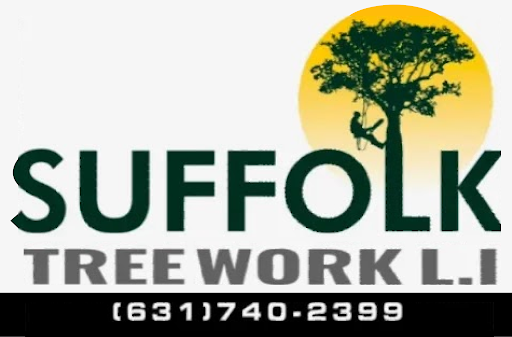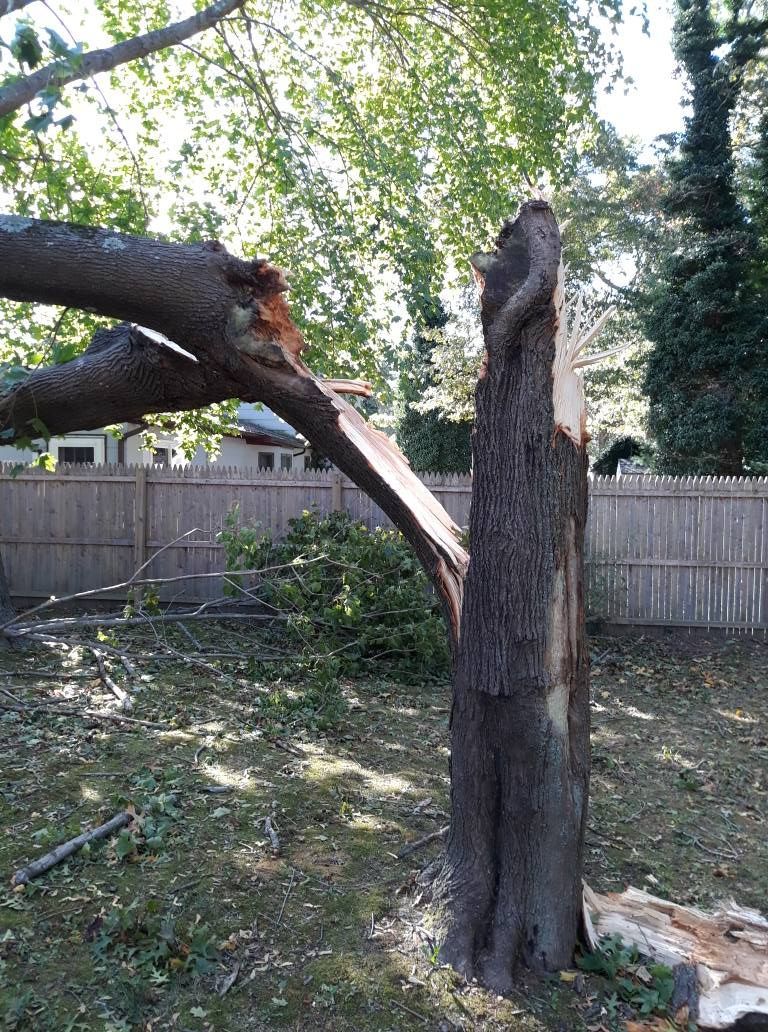Tree Removal Service in Suffolk County, New York
At Suffolk Tree Work LI, we know that some trees can no longer be saved, necessitating eradication. We remove trees securely by utilizing cutting-edge tools and industry standards. Our staff can offer comprehensive services at a cost that works for you. Tree removal services cover a variety of tree and trunk removal techniques, such as stump grinding and tree removal with crane assistance.
A typical team of arborists working swiftly and securely removes smaller trees. We can eliminate a dead tree, chop down a sick or damaged tree, or haul away a tree trunk or fallen limbs. Before filing for certification, each member of our teams of certified arborists underwent a rigorous training program and today has over 15
years of experience. We use this information and knowledge for your benefit. Call us for a quick consultation and free estimate.

When Do You Need Tree Removal Services?
Tree removal services are necessary when a tree presents a safety hazard, is dead or dying, or is causing damage to your property. Some signs that indicate the need for tree removal services include the following
Dead or diseased tree
If a tree is dead or diseased, it can pose a safety hazard to your property and your family. Dead trees can fall and cause damage to your property, while diseased trees can spread disease to other trees on your property.
Leaning tree
If a tree is leaning, it may be unstable and at risk of falling. Root damage, high winds, or other factors can cause this.
Overgrown tree
Overgrown trees can threaten your property and safety. Overgrown branches can break and fall, potentially causing damage or injury.
Our tree removal services are necessary when a tree poses a safety hazard, is dead or dying, or is causing damage to your property. If you notice any of the above signs, contact our local tree care professional to schedule a tree removal service.
Why Are Our Professionals Best For Tree Removal?
Tree removal can be a dangerous and complex task that requires the expertise of a professional. While some homeowners may be tempted to take on the job themselves, it is essential to recognize that tree removal is not a DIY project. Professionals have the necessary skills, experience, and equipment to safely and efficiently remove trees from your property. Here’s why our professionals are the ideal choice -
- First and foremost, professionals have the expertise to assess the tree and determine the best course of action. They can identify potential hazards, such as power lines, nearby structures, or unstable ground, and take the necessary precautions to ensure safety.
- Additionally, they have the training and experience to use specialized equipment, such as chainsaws and cranes, to remove trees safely.
- Furthermore, professional tree removal services can save you time and money in the long run. Attempting to remove a tree can be time-consuming and may damage your property or injure yourself or others. Professionals can efficiently remove the tree and ensure your property is in good condition.

Why Hire Our Expert Tree Removers?
Ensure your family and property are secure, remove any dangerous or damaged trees from your landscaping, and add finishing touches to make your yard feel more like a home. Get your free estimate by calling us at 631-740-2399 right away. We go above and beyond to care for your well-being and the safety of your property.
FAQ's
When is tree removal necessary?
Tree removal is needed when a tree is dead, dying, structurally unstable, diseased, or posing a safety hazard. Trees with severe root damage, leaning excessively, or interfering with power lines and structures may also need removal. In some cases, trees are removed for construction projects or to prevent damage to underground utilities. Our team evaluates each tree carefully, ensuring removal is the last resort after considering alternative solutions like pruning or cabling.
What are the dangers of leaving a dead or dying tree standing?
Dead or dying trees pose significant risks, including falling branches or total collapse, which can damage property or injure people. Weak tree structures can become even more hazardous in storms or high winds. Additionally, dead trees attract pests like termites, carpenter ants, and fungi, which can spread to healthy trees or even nearby structures. Prompt removal prevents these issues and maintains the safety and aesthetics of your property.
Do I need a permit for tree removal in Suffolk County?
Some towns in Suffolk County require permits, especially for large or protected tree species. Regulations vary, so it's best to check with your local municipality before scheduling a removal. Our team is familiar with local laws and can help you navigate the permit process if required. Attempting tree removal without the proper permits can lead to fines, so we ensure compliance with all regulations before proceeding.
What happens to the tree after removal?
After removal, we can either haul away the entire tree, leave the wood for firewood, or chip it into mulch. If stump removal is requested, we use grinding or excavation to eliminate it completely. Customers can choose whether they want the wood repurposed or disposed of. Our environmentally friendly practices ensure responsible tree waste management, whether through recycling or proper disposal.
What is the difference between tree removal and tree trimming?
Tree removal eliminates the tree entirely, including the trunk and sometimes the stump. Tree trimming (or pruning) involves selectively cutting branches to improve a tree’s health, shape, or safety. Trimming can prevent the need for removal by addressing issues like diseased limbs, overgrowth, or storm damage. However, if a tree is beyond saving due to disease or structural instability, full removal is the best option.
What challenges come with tree removal near power lines or buildings?
Removing trees close to power lines or structures requires specialized techniques to prevent damage. We use precision cutting, rigging, and sometimes cranes to safely lower branches and sections of the tree. Our team is trained in working around electrical hazards and confined spaces, ensuring controlled removal. Attempting DIY removal in these scenarios is highly dangerous and could result in serious injuries, property damage, or power outages.
How long does a tree removal take?
The time required depends on the tree's size, location, health, and surrounding obstacles. A small, easily accessible tree may take just a few hours, while a large tree in a tight space could take a full day or more. Additional time may be needed for stump grinding or site cleanup. Our team assesses each job and provides an estimated timeframe during the initial consultation.
What are the hidden benefits of tree removal?
Besides safety, removing an unwanted or hazardous tree can improve curb appeal, increase property value, and create space for landscaping or construction. It can also enhance sunlight exposure for your lawn and garden, leading to healthier grass and plant growth. Additionally, eliminating diseased or pest-infested trees helps protect surrounding vegetation from damage.
Will tree removal damage my yard or driveway?
Our team takes precautions to minimize disruption to your property. We use protective mats to prevent lawn damage, avoid heavy equipment on driveways whenever possible, and perform a thorough cleanup after the job. If large sections of the tree must be lowered, we ensure controlled landings to prevent impact damage. In rare cases where minor yard damage occurs, we discuss restoration options with homeowners.
Is stump removal necessary after tree removal?
While stump removal is optional, leaving a stump can lead to regrowth, attract pests, and create tripping hazards. Stumps can also interfere with landscaping plans and mowing. Stump grinding is the most efficient method for removal, reducing the stump below ground level and allowing for replanting or reseeding. We recommend removing stumps to fully reclaim the space and prevent future issues.


